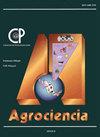DESCRIPTIVE STUDY OF THE CAPACITY OF SIX HILLSIDE SOIL MANAGEMENT SYSTEMS IN THE CONTROL OF SURFACE RUNOFF
IF 0.5
4区 农林科学
Q4 AGRICULTURE, MULTIDISCIPLINARY
引用次数: 0
Abstract
On tropical hillsides, torrential rains cause surface runoff that removes soil particles, nutrients and agro-inputs. This process limits soil fertility, agrosystem productivity and the rural economy. A descriptive study was conducted on a hillside in Los Tuxtlas, Veracruz, Mexico, to study water runoff and its runoff coefficients in four modalities of the “milpa intercropped with fruit trees” (MIAF) system, traditional and zero tillage, under rainfed conditions. The systems were established with a systematic design of treatments, without repetitions, between 2003 and 2011: 1) Milpa intercropped in chicozapote (Manilkara zapota), with sediment filter and minimum tillage (MIAF-CH-CF-LM); 2) Milpa intercropped with Persian lemon (Citrus x latifolia), with sediment filter and minimum tillage (MIAF-L-CF-LM); 3) Milpa intercropped in carambolo (Averrhoa carambola), with sediment filter and minimum tillage (MIAF-C-CF-LM); 4) Milpa intercropped in carambolo, without sediment filter and zero tillage (MIAF-C-SF-L0); 5) Zero tillage with crop residue distribution over the surface (Lo); and 6) Minimum tillage with crop residue burning and tracking (LM-QR). From August 2016 to February 2018, a 50 m2 runoff lot was installed in each system. Surface runoff was measured every 24 h; runoff sheet and runoff coefficient. The MIAF.system reduced surface runoff by 46.13 % with respect to that obtained in LM-QR. The MIAF systems with sediment filter and zero tillage without filter presented similar runoff and runoff coefficient values. The MIAF-CH-CF-LM system recorded the lowest runoff value among systems with tillage and filter. The L0 system showed the lowest volume and runoff coefficient.六种山坡土壤管理系统控制地表径流能力的描述性研究
在热带山坡上,暴雨造成地表径流,使土壤颗粒、养分和农业投入物流失。这一过程限制了土壤肥力、农业系统生产力和农村经济。在墨西哥韦拉克鲁斯州洛斯图克斯特拉斯的一个山坡上进行了一项描述性研究,研究了在雨养条件下“米尔帕间作果树”(MIAF)系统、传统耕作和免耕作四种模式下的水径流及其径流系数。在2003 - 2011年期间,采用无重复的系统处理设计建立了该系统:1)在chicozapote (Manilkara zapota)中间作Milpa,使用沉积物过滤器和最少耕作(MIAF-CH-CF-LM);2) Milpa与波斯柠檬(Citrus x latifolia)间作,带沉积物过滤器和最少耕作(MIAF-L-CF-LM);3)在杨桃(Averrhoa carambola)中间作Milpa,采用沉积物过滤和最少耕作(MIAF-C-CF-LM);4)在carambolo中间作Milpa,不加底泥过滤,免耕(MIAF-C-SF-L0);5)免耕,作物残茬分布在地表(Lo);6)秸秆焚烧跟踪(LM-QR)的最少耕作。从2016年8月到2018年2月,每个系统安装了一个50平方米的径流地块。地表径流每24 h测量一次;径流表和径流系数。MIAF。与LM-QR相比,系统减少了46.13%的地表径流。有泥沙过滤器的MIAF系统和无过滤器的零耕系统的径流和径流系数值相似。MIAF-CH-CF-LM系统的径流量在有耕作和过滤的系统中最低。L0体系的体积和径流系数最低。
本文章由计算机程序翻译,如有差异,请以英文原文为准。
求助全文
约1分钟内获得全文
求助全文
来源期刊

Agrociencia
农林科学-农业综合
CiteScore
0.50
自引率
33.30%
发文量
51
审稿时长
18-36 weeks
期刊介绍:
AGROCIENCIA is a scientific journal created and sponsored by the Colegio de Postgraduados. Its main objective is the publication and diffusion of agricultural, animal and forestry sciences research results from mexican and foreign scientists. All contributions are peer reviewed. Starting in the year 2000, AGROCIENCIA became a bimonthly and fully bilingual journal (Spanish and English versions in the same issue). Since 2007 appears every month and a half (eight issues per year). In addition to the printed issues, the full content is available in electronic format.
 求助内容:
求助内容: 应助结果提醒方式:
应助结果提醒方式:


